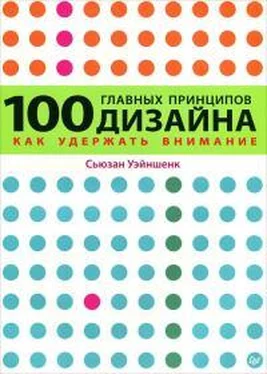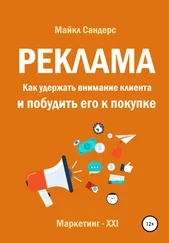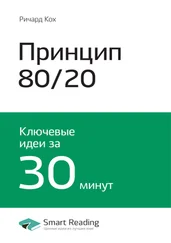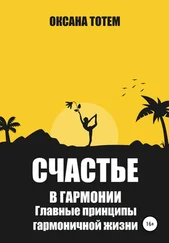Рис. 100.3. Образцы менее эффективны, чем настоящий продукт
Исследователи заметили, что когда люди имели дело с образцами, они не обращали на них внимания, так как знали, что они идентичны продукту в упаковке.
Дело в обонянии?
Исследователи решили проверить, не запах ли влияет на подсознание, и в следующем эксперименте поместили продукты в стеклянный контейнер. Когда участники эксперимента могли видеть еду, но не могли ее потрогать, за нее давали немного больше денег, но не так много, как когда она находилась в пределах досягаемости. «Ага! – подумали исследователи. – Это все обонятельные сигналы!», но затем обнаружили, что те же результаты получаются при экспериментах с непищевыми продуктами, так что запах тут ни при чем. На рис. 100.4 показаны результаты испытаний «за стеклом».
Рис. 100.4. Продукт, находящийся за стеклом, оценивают выше, но не так, как если бы он находился в непосредственной близости
Рефлекс Павлова?
Башон и его группа предположили, что тут действует павловский условный рефлекс: когда продукт находится в пределах досягаемости, он действует как стимул и вызывает ответную реакцию. Изображение и даже текст тоже могут стать условными стимулами и вызвать подобную реакцию, но они не в состоянии включить такую же сильную реакцию, как реальный продукт.
Выводы
• Традиционные магазины, в которых можно потрогать товар руками, имеют преимущество перед интернет-магазинами, особенно если речь идет о цене.
• Размещение продуктов за стеклом может уменьшать цену, которую покупатель готов платить. Библиография
Alloway, Tracy P., and Alloway, R. 2010. “Investigating the predictive roles of working memory and IQ in academic attainment.” Journal of Experimental Child Psychology 80(2): 606-21.
Anderson, Cameron, and Kilduf, G. 2009. “Why do dominant personalities attain infuence in face-to-face groups?” Journal of Personality and Social Psychology 96(2): 491–503.
Anderson, Richard C, and Pichert, J. 1978. “Recall of previously unrecallable information following a shift in perspective.” Journal of Verbal Learning and Verbal Behavior 17: 1-12.
Aronson, Elliot, and Mills, J. 1959. “The efect of severity of initiation on liking for a group.” U.S.Army Leadership Human Research Unit.
Baddeley, Alan D. 1994. “The magical number seven: Still magic after all these years?” Psychological Review 101 : 353-6.
Baddeley, Alan D. 1986. Working Memory. New York: Oxford University Press.
Bahrami, Bahador, Olsen, K., Latham, P. E., Roepstorf, A., Rees, G., and Frith, C. D. 2010. “Optimally interacting minds.” Science 329(5995): 1081-5. doi:10.1126/science.1185718.
Bandura, Albert. 1999. “Moral disengagement in the perpetration of inhumanities.” Personality and Social Psychology Review 3(3): 193–209. doi:10.1207/ s15327957pspr0303_3, PMID 15661671.
Bargh, John, Chen, M., and Burrows, L. 1996. “Automaticity of social behavior: Direct efects of trait construct and stereotype.” Journal of Personality and Social Psychology 71(2): 230-44.
Bayle, Dimitri J., Henaf, M., and Krolak-Salmon, P. 2009. “Unconsciously perceived fear in peripheral vision alerts the limbic system: A MEG study.” PLoS ONE 4(12): e8207. doi:10.1371/journal.pone.0008207.
Bechara, Antoine, Damasio, H., Tranel, D., and Damasio, A. 1997. “Deciding advantageously before knowing advantageous strategy.” Science 275: 1293-5.
Begley, Sharon. 2010. “West brain, East brain: What a diference culture makes.” Newsweek, February 18, 2010.
Bellenkes, Andrew H., Wickens, C. D., and Kramer, A. F. 1997. “Visual scanning and pilot expertise: The role of attentional fexibility and mental model development.” Aviation, Space, and Environmental Medicine 68(7): 569–79.
Belova, Marina A., Paton, J., Morrison, S., and Salzman, C. 2007. “Expectation modulates neural responses to pleasant and aversive stimuli in primate amygdala.” Neuron 55: 970–84.
Berman, Marc G., Jonides, J., and Kaplan, S. 2008. “The cognitive benefts of interacting with nature.” Psychological Science 19: 1207–12.
Berns, Gregory S., McClure, S., Pagnoni, G., and Montague, P. 2001. “Predictability modulates human brain response to reward.” The Journal of Neuroscience 21(8): 2793–8.
Berridge, Kent, and Robinson, T. 1998. “What is the role of dopamine in reward: Hedonic impact, reward learning, or incentive salience?” Brain Research Reviews 28: 309–69.
Biederman, Irving. 1985. “Human image understanding: Recent research and a theory.” Computer Vision, Graphics, and Image Processing . Elsevier.
Broadbent, Donald. 1975. “The magic number seven after ffteen years.” Volume 32, Issue 1, October 1985, Pages 29–73. In Studies in Long-Term Memory , edited by A. Kennedy and A. Wilkes. London: Wiley.
Bushong, Ben, King, L. M., Camerer, C. F., and Rangel, A. 2010. “Pavlovian processes in consumer choice: The physical presence of a good increases willingness-to-pay .” American Economic Review 100: 1–18.
Canessa, Nicola, Motterlini, M., Di Dio, C., Perani, D., Scifo, P., Cappa, S. F., and Rizzolatti, G. 2009. “Understanding others’ regret: A FMRI study.” PLoS One 4(10): e7402.
Carey, Susan. 1986. “Cognitive science and science education.” American Psychologist 41(10): 1123–30.
Cattell, James M. 1886. “The time taken up by cerebral operations.” Mind 11: 377–92.
Chabris, Christopher, and Simons, D. 2010. The Invisible Gorilla . New York: Crown Archetype.
Chartrand, Tanya L., and Bargh, J. 1999. “The chameleon efect: The perception-behavior link and social interaction .” Journal of Personality and Social Psychology 76(6): 893–910.
Chen, Yi-Fen. 2008. “Herd behavior in purchasing books online.” Computers in Human Behavior 24: 1977–92.
Christof, Kalina, Gordon, A. M., Smallwood, J., Smith, R., and Schooler, J. 2009. “Experience sampling during fMRI reveals default network and executive system contributions to mind wandering.” Proceedings of the National Academy of Sciences 106(21): 8719–24.
Chua, Hannah F., Boland, J. E., and Nisbett, R. E. 2005. “Cultural variation in eye movements during scene perception.” Proceedings of the National Academy of Sciences 102: 12629–33.
Читать дальше
Конец ознакомительного отрывка
Купить книгу












